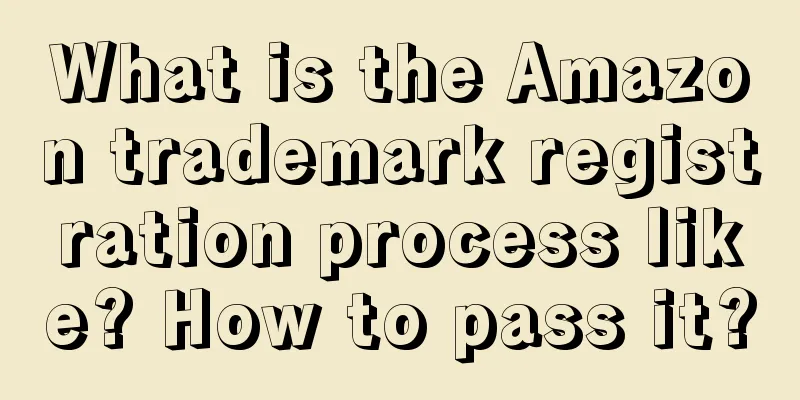Salesforce Conference Experience and Thoughts: The Development of AI Will Widen the Gap between Chinese and American SaaS Products and Ecosystems

|
Yesterday, the three-day Dreamforce conference ended. This is the annual event of Salesforce (hereinafter referred to as SF), the founder of SaaS, which has been held since 2003. This event had 40,000 attendees, which is larger than the SaaStr conference that ended last week (the latter had 12,500 attendees). The participants are also different. SaaStr is a big gathering of SaaS industry practitioners and investors. Dreamforce is a customer conference, partner and developer conference for SF companies, and also a big party for employees and customers to get together. 1. Dreamforce This Year’s Theme: AI This year's conference has only one theme: AI. At first I was a little surprised - among the 1,500+ speeches/activities, about 1/4 of the titles included AI, and the content of most sessions involved AI. The same was true at the booth, including the partner booths, where everyone talked a lot about AI. So, to what extent has the application of AI in SaaS products progressed? I watched more than 50 product demos during speeches and product demonstrations. In the products of Sales Could, Service Cloud and partners, the right sidebar often shows: Einstein (SF's AI platform, based on large language models such as GPT) scores business leads or customer usage, suggestions for the next action (usually several options), more automated customer email/text message templates... As for how much application value it has at present? We had private discussions with several product directors and product managers at SF, and they did not think that fundamental changes would be brought about immediately; but they also emphasized that AI is a trend. In many speeches, I saw PPTs talking about xxx function being launched in winter 2024, or later. I also noticed that all presentations on AI, whether from SF or partners, mentioned Trust AI in their PPTs. At first I thought it was just a psychological "belief" and laughed at it with my friends in the same industry. Later, I talked with the product marketing manager (PMM) of Asana (SF's partner) and understood that this means "trustworthy" - GPT3~4 generation AI still has many uncertainties for toB applications, and the "Trust" mentioned by SF comes from using more accurate data and classifying and feeding the data. (Based on my understanding as a non-AI technician). Let’s imagine a scenario: In the past, SaaS helped enterprises store data for statistics and let users do their own analysis; in the future, AI will analyze data and guide employees’ work. This will be a revolutionary change. At this conference, I watched about 50 Demos (product demonstrations). After all, I have been engaged in product development for 12 years. My judgment is: this is indeed just the beginning of the trend, but in 2 to 3 years, AI will greatly improve the efficiency of SaaS products. I also listened in on an AI SDR (sales development representative) calling a colleague nearby. The answer and communication were very smooth, with no other unpleasantness except for a 1s delay. And that 1s can be greatly improved. Coincidentally, I received a call from a Meituan robot yesterday reminding me to repay my loan. As a technology from a large domestic manufacturer, it should be representative, but after three interactions, I found that the answer was irrelevant. There are already obvious gaps at the application layer. 2. AI Anxiety and SaaS Companies’ Responses I don't intend to spread anxiety, I just hope to discuss the current situation. China's SaaS has already lagged behind Silicon Valley by more than ten years, and with this round of AI, the lag time will increase significantly. Let's deduce: ① China's LLM (Large Language Model) is currently far behind that of the United States, and this gap may gradually widen in the future due to the ability of LLM to upgrade itself and the limitation of GPU supply. (At present, many evaluations are still a bit like the competition among chip manufacturers in running Benchmarks. Excellent evaluation results do not mean high actual level.) ② From the perspective of Salesforce and other Silicon Valley SaaS companies fully embracing AI, and from our experience at the conference and product experience, we can infer that American SaaS products will be empowered by AI and significantly upgraded. Although at present, more emphasis is placed on AI-assisted labor and people-centeredness, and the results may not be seen within 2 years, it will inevitably greatly improve the work efficiency in most fields in 3 to 5 years and continue to expand the scope of influence. ③ In the past, the main feeling that Silicon Valley SaaS gave me was that it helped improve management efficiency (this is exactly why American SaaS is difficult to copy to China, see another article at the end of this article for details). However, with the empowerment of AI, the content that SaaS can improve will increasingly involve business areas. For example, the training cycle of new employees will be shortened, the professional division of personnel will be more detailed, customer service efficiency will be doubled, and marketing and sales efficiency will also be greatly improved; in many fields such as manufacturing, logistics, distribution, retail, and scientific research, as AI-Based-SaaS matures, human productivity will also be greatly improved. ④ With the combination of robots and AI, many current labor-intensive industries will be transformed into capital and technology-intensive industries. This process may be gradually realized in 10 to 20 years after AI-Based-SaaS matures. By then, the SaaS and information technology fields, which are not valued by the government today, will become a major shortcoming in China's industrial development. ⑤ We look at this issue from a dynamic perspective: AI-Based-SaaS products from the United States are difficult to import and use. China's manufacturing and other industries actually lack the possibility of importing such products, so they have only two choices - either relocate the company (which still cannot avoid the possibility of being included in the Entity List), or can only count on the rise of Chinese SaaS. ⑥ Reversely predict the pattern of China's SaaS in the next few years: A. Due to the current shrinking investment, the historical SaaS investment of more than 160 billion RMB (or 26 billion USD) will be used to produce SaaS products in various fields. The winners will be decided within 2 to 3 years : there will be only 2 to 3 top players left in each segment, and the head concentration effect will be obvious (including the possibility of many mergers). B. The government is gradually paying attention to AI and SaaS. Unlike the manufacturing industries such as communication equipment, which have entered a no-man's land, the SaaS field will still have a latecomer advantage in the next ten years: by learning from the advanced experience of Western SaaS and combining it with the needs of local Chinese customers, it will continue to evolve. C. Thanks to the Matthew effect and the support of government funding and policies, the leading SaaS companies in each track will survive (similar to Wind Information and Fanruan) and become scalable and profitable companies. In this process, there will be many major upgrades of AI and other technologies. But as the saying goes, "business logic is more important than technical logic." The upgrade of technology only empowers the scenarios and businesses implemented by SaaS, and the advantages of leading SaaS companies will become greater and greater. Just as I saw at the Salesforce conference this time: 11,000 partners, related revenues brought by a large number of PaaS platforms, and the brand and ecosystem all demonstrated huge economies of scale. III. Current Response From this, I also infer the advice for every current SaaS company: ① Survive: We cannot count on policy dividends at the moment. We must wait until the manufacturing industry shows obvious signs of lagging behind the West before we will receive absolute attention from the policy side. What we can do is manage cash flow well and achieve long-term cash flow security. ② Solve customers' business problems in a down-to-earth manner and actively participate in the digital transformation of the industry/field in which they are located. In "The Three-Body Problem", the Trisolarans suppressed the progress of the scientific theories of the earthlings, but the earthlings were still able to build a huge fleet. SaaS can solve customers' business problems whether it has the most advanced AI empowerment or not. ③ Grouping and ecology. ④ Promote policy support. The last two points are self-evident and will not be elaborated on. The above is a summary of my thoughts after a week of attending conferences in Silicon Valley and communicating with local SaaS practitioners. It is not yet mature, so please leave a message at the end of the article to discuss. The author of this article, Wu Hao, is a knowledge accumulator in the SaaS field, an entrepreneurship consultant, and the author of "SaaS Entrepreneurship Roadmap". |
<<: What did ClickUp do right to achieve 150 million ARR in 6 years in the red ocean market?
Recommend
Young people gather on Xiaohongshu
In the world of social media, traffic is often kin...
What are the creative angles for good copywriting?
This article focuses on the creativity of good cop...
How to register a Shopee account? Steps
If you want to open a Shopee store, you first need...
Taobao's strategy for this year's Double Eleven has completely changed
Unlike previous years when Taobao emphasized the l...
Amazon India launches Sale Event Planner tool to help merchants plan events
Amazon India recently announced the launch of a ne...
N "specialization strategies" to help you escape competition
The specialization strategy is also called the con...
Can I only log in to Amazon with one computer? Can I only log in with one IP?
To open a store on Amazon, you need a computer. An...
The key logic of brand building
This article analyzes the key logic of brand build...
40 predictions to help you see long videos in 2024
In the past year, the emergence of a number of dra...
Tik Tok, which is not short of money, has also begun to try to charge for content
As a popular short video platform, Douyin has alwa...
Review the second half of 2022 and gain insights into the market in the report
In the past two years, the epidemic has "run&...
批「信息茧房」者,困在了「认知茧房」里
It is human nature to be partial to information. A...
Young people who are driven crazy by work have made Loopy a top star
Recently, the pink beaver Loopy has successfully b...
Twenty-one years of video websites: burning through 100 billion, unable to get out of the fog
After 21 years of development, the video website i...
When everyone understands that "free is the most expensive", operations go crazy
Giving away gifts and services to users for free i...









